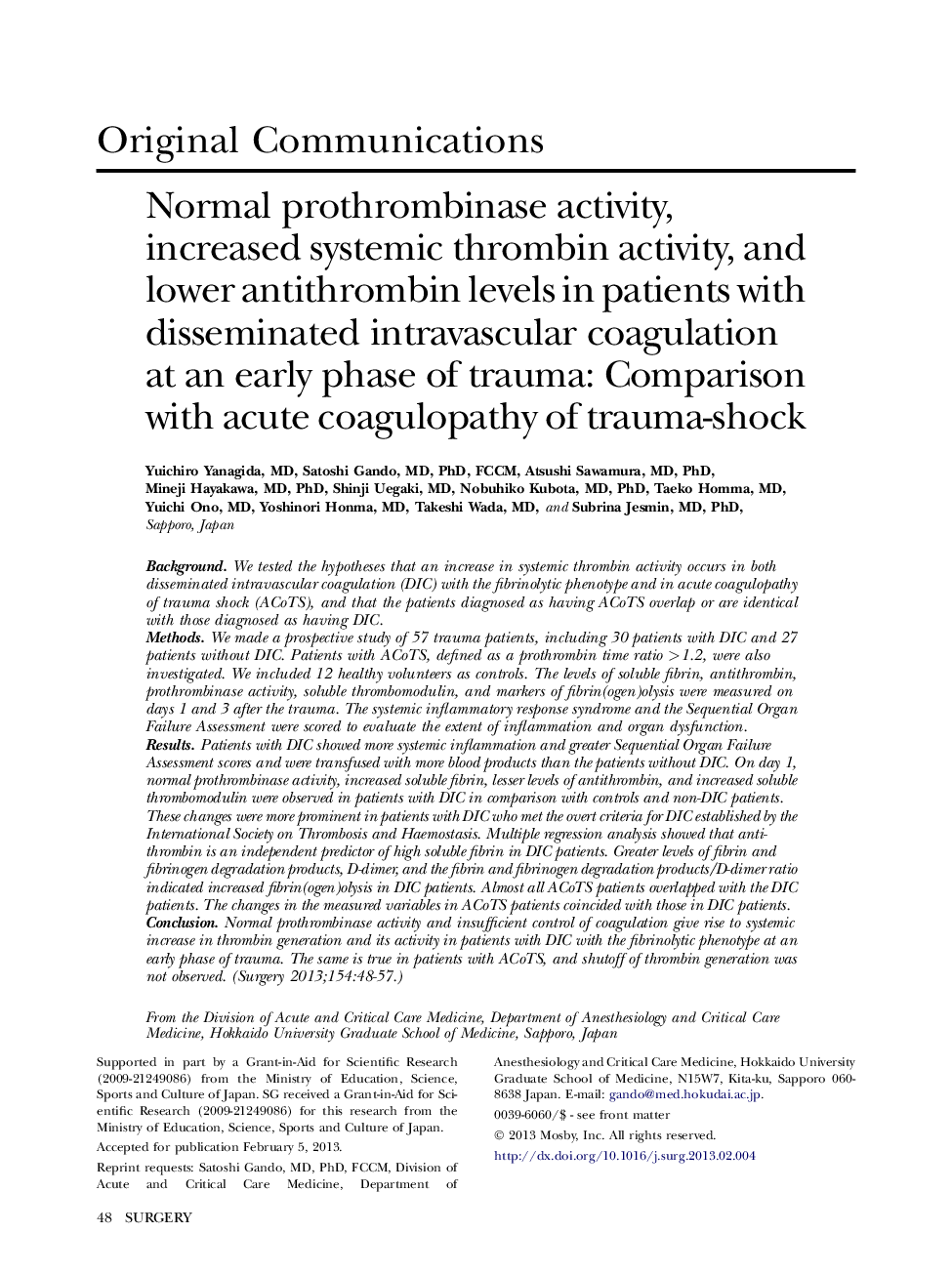| Article ID | Journal | Published Year | Pages | File Type |
|---|---|---|---|---|
| 4307347 | Surgery | 2013 | 10 Pages |
BackgroundWe tested the hypotheses that an increase in systemic thrombin activity occurs in both disseminated intravascular coagulation (DIC) with the fibrinolytic phenotype and in acute coagulopathy of trauma shock (ACoTS), and that the patients diagnosed as having ACoTS overlap or are identical with those diagnosed as having DIC.MethodsWe made a prospective study of 57 trauma patients, including 30 patients with DIC and 27 patients without DIC. Patients with ACoTS, defined as a prothrombin time ratio >1.2, were also investigated. We included 12 healthy volunteers as controls. The levels of soluble fibrin, antithrombin, prothrombinase activity, soluble thrombomodulin, and markers of fibrin(ogen)olysis were measured on days 1 and 3 after the trauma. The systemic inflammatory response syndrome and the Sequential Organ Failure Assessment were scored to evaluate the extent of inflammation and organ dysfunction.ResultsPatients with DIC showed more systemic inflammation and greater Sequential Organ Failure Assessment scores and were transfused with more blood products than the patients without DIC. On day 1, normal prothrombinase activity, increased soluble fibrin, lesser levels of antithrombin, and increased soluble thrombomodulin were observed in patients with DIC in comparison with controls and non-DIC patients. These changes were more prominent in patients with DIC who met the overt criteria for DIC established by the International Society on Thrombosis and Haemostasis. Multiple regression analysis showed that antithrombin is an independent predictor of high soluble fibrin in DIC patients. Greater levels of fibrin and fibrinogen degradation products, D-dimer, and the fibrin and fibrinogen degradation products/D-dimer ratio indicated increased fibrin(ogen)olysis in DIC patients. Almost all ACoTS patients overlapped with the DIC patients. The changes in the measured variables in ACoTS patients coincided with those in DIC patients.ConclusionNormal prothrombinase activity and insufficient control of coagulation give rise to systemic increase in thrombin generation and its activity in patients with DIC with the fibrinolytic phenotype at an early phase of trauma. The same is true in patients with ACoTS, and shutoff of thrombin generation was not observed.
